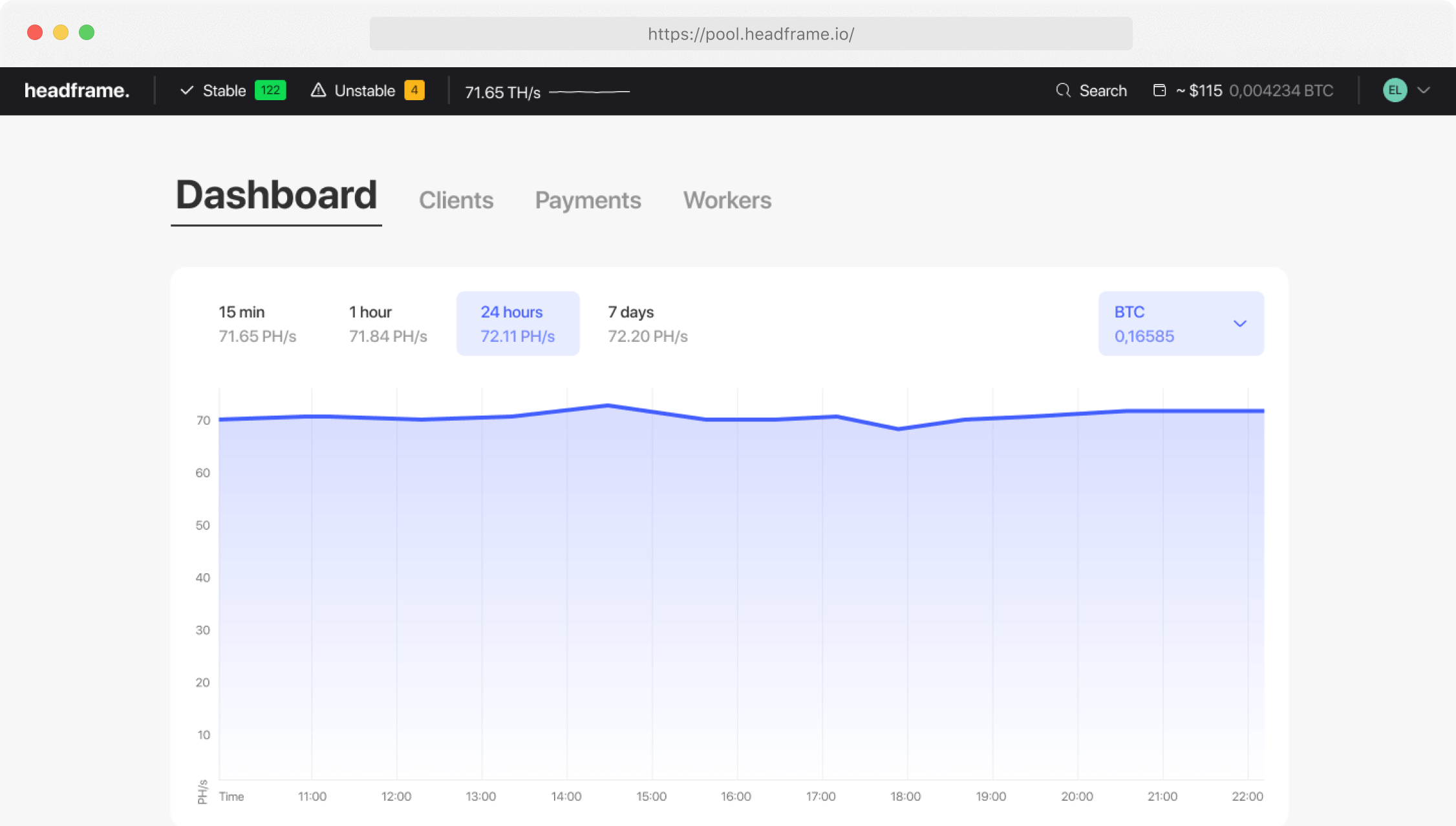Cryptocurrency Trends Affecting Mining Pools
The world of cryptocurrencies is dynamic and constantly changing, significantly impacting the operation of mining pools. Understanding current trends and their effects on mining pools is crucial for effective management and adaptation to changes. Let’s explore the main cryptocurrency trends influencing mining pools and how these changes are shaping the future of the mining industry.
Earn more money with Headframe
Join a mining pool and get the best profitability in mining. Already more than 10,000 miners trust Headframe.
Consensus Algorithms
One of the most notable trends is the growing popularity of various consensus algorithms. The traditional Proof of Work (PoW) algorithm requires significant computing power and energy, making it expensive and energy-intensive. In recent years, alternative algorithms such as Proof of Stake (PoS) and its variations have gained popularity. PoS is based on the amount of cryptocurrency held by a user and requires significantly less energy. This shift means mining pools must adapt to new algorithms, which may involve updating equipment and software and changing mining strategies.
Decentralization
The trend toward decentralization also impacts mining pools. From the beginning, cryptocurrencies were designed as decentralized systems, but large mining pools can create centralization risks by concentrating a significant portion of the computing power in the hands of a few participants. In response, developers and cryptocurrency communities strive to create solutions that promote decentralization. This includes improving consensus algorithms, creating more even mining conditions, and encouraging broader participation. Mining pools need to consider these trends and work to remain part of a decentralized ecosystem.
Energy Sustainability
Energy sustainability is becoming an increasingly important aspect of the mining industry. With growing attention to environmental issues, mining pools face the necessity to reduce their carbon footprint. This includes using renewable energy sources such as solar, wind, and hydroelectric power and implementing energy-efficient technologies. Reducing energy consumption not only helps improve environmental sustainability but also lowers operational costs, contributing to increased revenues.
Security Technologies
The development of security technologies also plays a vital role. With the increase in cyber-attacks and other threats, mining pools must invest in advanced methods of data and infrastructure protection. This includes using multi-level authentication, data encryption, and regular security audits. Ensuring a high level of security helps protect assets and participant data, strengthening trust and attracting more miners to the pool.
Technological Innovations
Technological innovations continue to transform the mining industry. The use of artificial intelligence and machine learning allows mining pools to optimize their operations, improve resource allocation, and predict trends. These technologies can analyze large volumes of data in real-time, enabling informed decision-making and rapid adaptation to changes. Implementing advanced algorithms and technologies helps mining pools remain competitive and efficient.
Economic Factors
Economic factors also significantly impact mining pools. Cryptocurrency price volatility can substantially affect mining profitability. During periods of price increases, mining profitability can rise significantly, while during downturns, incomes may decrease. Mining pools need to develop strategies to minimize risks associated with volatility, which can include asset diversification and hedging strategies. Economic sustainability of pools also depends on cost management and operation optimization.
Regulatory Changes
Regulatory changes represent another important trend affecting mining pools. Different countries and regions have various laws and regulations regarding cryptocurrency mining, and these regulatory acts can change significantly. Mining pools must monitor legislative changes and adapt to new requirements to avoid legal issues and ensure compliance. Transparency and adherence to regulatory requirements also strengthen the trust of participants and investors, contributing to stability and revenue growth.
Social and Environmental Factors
Social and environmental factors are becoming increasingly important for mining pools. Public opinion and consumer preferences are increasingly leaning towards companies that demonstrate a commitment to sustainable development and social responsibility. Mining pools that actively support environmental initiatives and use renewable energy sources can gain significant advantages in terms of improved reputation and support from the public and market participants.
Educational Initiatives
Educational initiatives and upskilling participants also play a vital role in adapting to changes in the mining industry. Training miners in new methods and technologies helps improve their skills and knowledge, leading to more efficient work. Educational programs and training sessions help pool participants better understand and use modern technologies to optimize their operations. This promotes more responsible and informed participation in mining operations, enhancing their overall efficiency and stability.
Partnerships and Collaborations
Partnerships and collaborations with other mining pools and companies also play a crucial role in adapting to current trends. Combining efforts and sharing knowledge and resources help accelerate the development and implementation of new technologies. Partnership relationships foster the creation of a global ecosystem where innovations can quickly spread and adapt to various conditions. This improves the overall efficiency and sustainability of mining operations.
In conclusion, cryptocurrency trends significantly influence mining pools, shaping the future of the mining industry. The growing popularity of various consensus algorithms, the drive for decentralization, energy sustainability, the development of security technologies, technological innovations, economic factors, regulatory changes, social and environmental factors, educational initiatives, and partnerships all play crucial roles in helping mining pools adapt to current changes and ensure their long-term success. Understanding and applying these strategies helps mining pools effectively address challenges and leverage opportunities for achieving sustainable development in the cryptocurrency industry.


